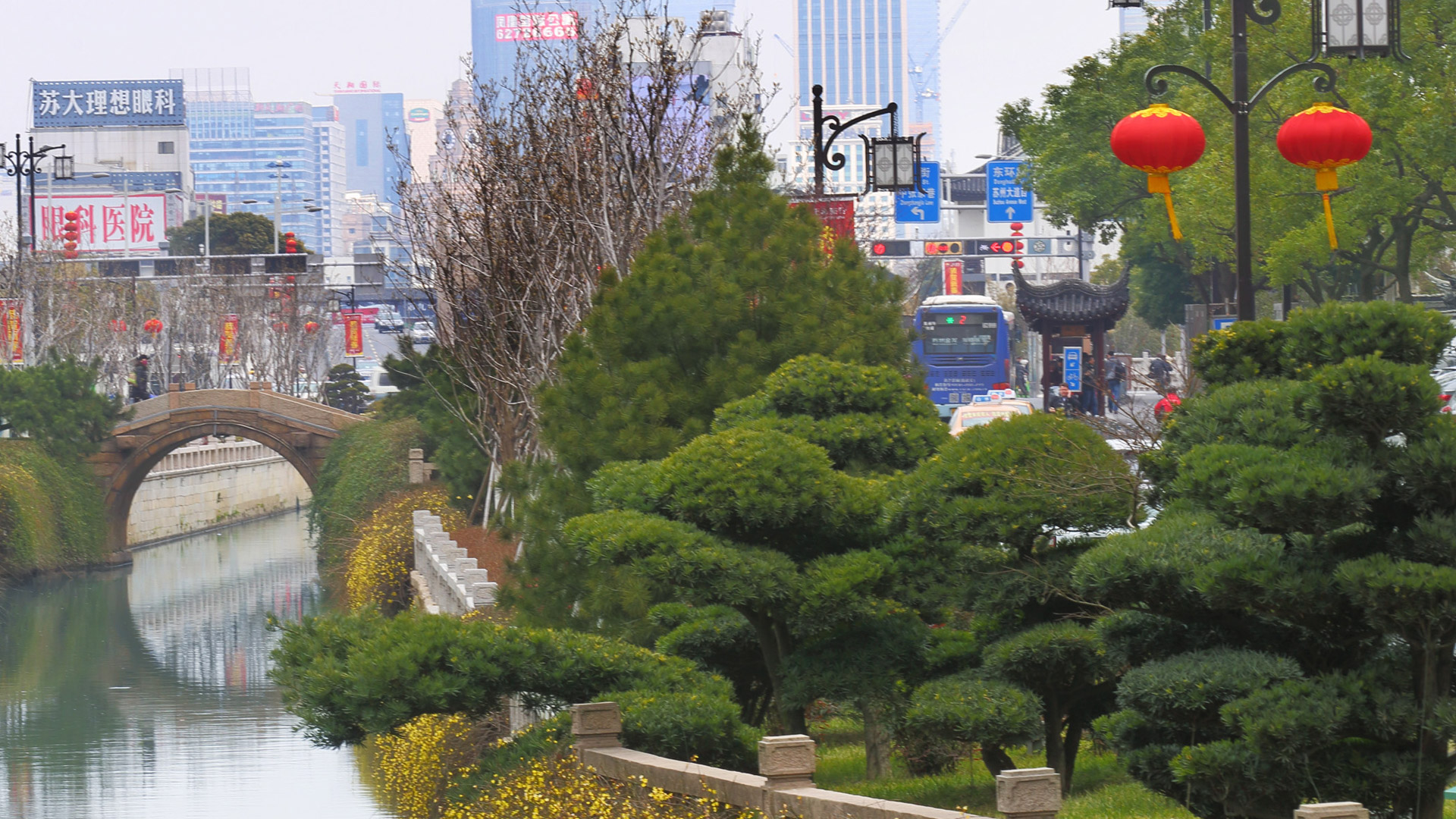Sponge Cities to Take On COVID-19 and Climate Change
Cities Under Water Stress
Cities in the People’s Republic of China (PRC) are among the most water-stressed in the world. They face rapidly increasing urban water demand, water scarcity made worse by climate change and water pollution, and higher risks of urban flooding. To help alleviate water stress in cities, the PRC government launched in 2015 a national “sponge city” program.
A “sponge” city, so named because of its absorbent capacity, is designed to replicate the natural processes to soak up heavy rains and floods. Sponge cities have water infrastructure systems that use “green infrastructure” to absorb, filter, and store water for future reuse, effectively improving the cities’ resilience against the adverse impacts of climate change.
The PRC’s sponge city program has been piloting green infrastructure in 16 cities, including Pingxiang, as part of an ADB-supported project. In 2016, 14 more cities were added to the program, including Shenzhen.
In an ADB sponge city workshop in 2018, the Shenzhen Water (Group) Co., Ltd. (SZWG) requested ADB assistance to partially fund its 2020–2023 investment plan. In 2020, ADB, the SZWG, and the Shenzhen Water and Environment Investment Group Co., Ltd. (SZWEIC) signed the $200 million Climate-Resilient and Smart Urban Water Infrastructure Project in support of the PRC’s sponge city program.
The SZWG provides water supply services in Shenzhen, while the SZWEIC is its investment platform for operations outside Shenzhen. SZWG, as the project sponsor and guarantor, is committed to making its investments more resilient to climate change.
Sponge Cities and Smart Water
In a sponge city, groundwater is recharged through various low-impact development techniques such as green roofs, preserved floodplains, permeable pavements, rainwater gardens, retention ponds, seepage wells, sunken parks, storage facilities, wastewater reuse, and wetlands. Sponge cities can also include advanced early warning systems for floods, weather events, and pollution.
The SZWG is supporting the building of sponge cities and will help other cities do the same. SZWG’s partnership project with ADB will support SZWG’s investment in multiple water supply and wastewater treatment facilities with smart water technologies and climate- and disaster-resilient urban water infrastructure in Shenzhen and third- and fourth-tier cities. Smart water technologies applied throughout the “water value chain” can improve the efficiency of water supply services, reduce water losses, and enhance water quality. Specifically, ADB will assist the SZWG in financing multiple urban water subprojects that support sponge city development, to be identified during the project implementation period in 2020–2023. ADB will extend financing on a subproject-by-subproject basis.
Subprojects will include upgrading technologies in SZWG’s water supply and wastewater treatment facilities to reduce nonrevenue water, optimize energy efficiency, and enhance service quality. Others will involve strengthening the long-term monitoring and evaluation of urban water systems. These subprojects are expected to reduce water losses, energy consumption, and carbon dioxide emissions.
The project will also promote knowledge on sponge city development and smart water technology applications while promoting gender inclusiveness in SZWG’s operations.
Outsmarting COVID-19 and Climate Change
With the ongoing COVID-19 pandemic, is the SZWG ready to effectively implement its plans?
The SZWG is the first PRC water company to produce and distribute high-quality potable water to households using a water safety plan for streamlined water quality management through automation. It has also invested in research and development in collaboration with PRC universities, and owns 52 patents and 62 utility models. In fact, the SZWG has already completed two sponge city projects.
The SZWG is more than ready to help support sponge city development in the PRC. SZWG’s implementation of smart water management will accelerate the transition towards more sustainable use of water beyond the COVID-19 pandemic. The company aims to disseminate and bring its operational know-how from Shenzhen to smaller cities in the PRC. By 2026, the SZWG targets:
- at least $40 million in equivalent capital expenditures invested for flood mitigation
- at least 2 million more people benefiting from improved urban water services
- volume of water produced increased by about 100 million cubic meters per year
- volume of wastewater treated increased by about 40 million cubic meters per year
- at least 10 female employees promoted to mid-level or high-level managers at the SZWG.
By design, sponge cities are not only climate- and disaster-resilient but also water-efficient. And as the COVID-19 pandemic has highlighted the importance and preventive power of water, sanitation, and hygiene in sustaining human health and well-being, sponge cities are well-equipped to combat both the climate and COVID-19 crises.
Project Details
People’s Republic of China: Climate-Resilient and Smart Urban Water Infrastructure Project
Cost
$400 million
- ADB $200 million
Cofinancing Partners
- Shenzhen Water (Group) Co., Ltd. undisclosed
- Shenzhen Water and Environment Investment Group Co., Ltd. undisclosed
Dates
Approval Date 25 August 2020
Signing Date undisclosed
Completion Date undisclosed

